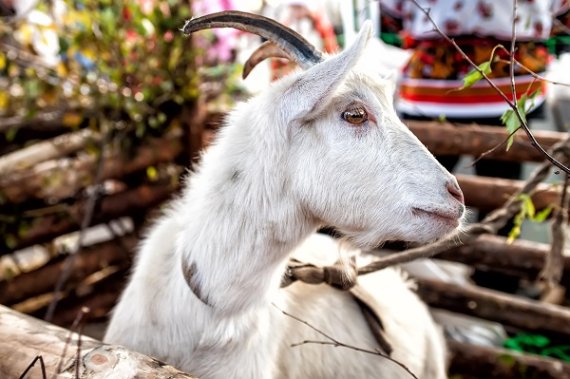Yes, said an Alterra study last year. No, says a recent study by the Central Veterinary Institute (CVI). A committee will soon attempt to figure out who is right. Manure transportation cannot have played a major role in the spreading of the Coxiella burnetti bacteria, which cause Q fever, between 2007 and 2010 in the Netherlands. This was the conclusion drawn by Hendrik-Jan Roest of the CVI and researchers from the Animal Health Service (GD) in a recent publication in the open access platform PlosOne. They evaluated 12 infected and 24 uninfected goat farms which transported their manure to another postcode area, and correlated this with the number of Q fever patients in those areas. Their conclusion: we see no significantly large numbers of Q fever patients in the areas with infected manure.
Furthermore, Roest and the GD researchers claim that there is little or no likelihood of the manure being a risk factor in the spread of Q fever. They measured the temperature in muck heaps on two infected goat farms and say that few Q fever bacteria could survive the temperatures, which were over 40 degrees Celsius. They therefore conclude that manure from infected farms cannot have caused much Q fever.
Last year, however, Alterra researcher Tia Hermans did find a clear link between the transportation of infected manure and the incidence of Q fever patients. Hermans linked data on the location of infected goat farms and the transportation of manure from them with the addresses of Q fever patients. The data was from the lambing season on the farms. In the month following lambing, according to Hermans’ spatial analysis of the locations of Q fever infections and 117 infected goat and sheep farms, and of the transportation of infected manure, there was a clear link between manure and Q fever. Various places in the Netherlands where Q fever occurred were nowhere near infected farms, but infected manure had been spread on fields nearby, showed Hermans’ publication in PlosOne.
It is not disputed that the infected farms were the main source of Q fever. Local residents became infected with the bacteria after it was carried from the compound through the air in small dust or manure particles. But Hermans noticed last year that this infection route could not be the only one. If you compare the locations of the infected farms with the addresses of the Q fever patients, it is clear that there must be another cause as well. Roest rules out the possibility of manure transport as a route, but does not propose an alternative in the article. So the question remains: by which infection routes did the Q fever patients come into contact with the pathogenic Coxiella burnetti bacterium? Was manure transportation one of them? Roest and Hermans will be debating the matter with each other and other experts at the end of May. Perhaps Wageningen UR will then have a clear answer to the question of how Q fever spread.

